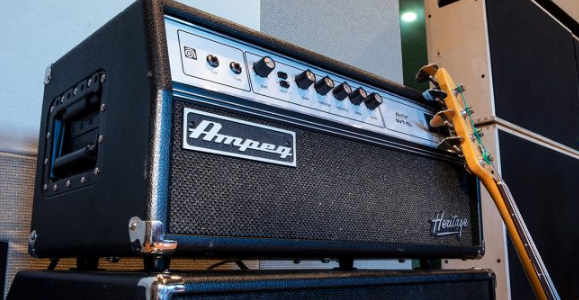Products Category
- FM Transmitter
- 0-50w 50w-1000w 2kw-10kw 10kw+
- TV Transmitter
- 0-50w 50-1kw 2kw-10kw
- FM Antenna
- TV Antenna
- Antenna Accessory
- Cable Connector Power Splitter Dummy Load
- RF Transistor
- Power Supply
- Audio Equipments
- DTV Front End Equipment
- Link System
- STL system Microwave Link system
- FM Radio
- Power Meter
- Other Products
- Special for Coronavirus
Products Tags
Fmuser Sites
- es.fmuser.net
- it.fmuser.net
- fr.fmuser.net
- de.fmuser.net
- af.fmuser.net ->Afrikaans
- sq.fmuser.net ->Albanian
- ar.fmuser.net ->Arabic
- hy.fmuser.net ->Armenian
- az.fmuser.net ->Azerbaijani
- eu.fmuser.net ->Basque
- be.fmuser.net ->Belarusian
- bg.fmuser.net ->Bulgarian
- ca.fmuser.net ->Catalan
- zh-CN.fmuser.net ->Chinese (Simplified)
- zh-TW.fmuser.net ->Chinese (Traditional)
- hr.fmuser.net ->Croatian
- cs.fmuser.net ->Czech
- da.fmuser.net ->Danish
- nl.fmuser.net ->Dutch
- et.fmuser.net ->Estonian
- tl.fmuser.net ->Filipino
- fi.fmuser.net ->Finnish
- fr.fmuser.net ->French
- gl.fmuser.net ->Galician
- ka.fmuser.net ->Georgian
- de.fmuser.net ->German
- el.fmuser.net ->Greek
- ht.fmuser.net ->Haitian Creole
- iw.fmuser.net ->Hebrew
- hi.fmuser.net ->Hindi
- hu.fmuser.net ->Hungarian
- is.fmuser.net ->Icelandic
- id.fmuser.net ->Indonesian
- ga.fmuser.net ->Irish
- it.fmuser.net ->Italian
- ja.fmuser.net ->Japanese
- ko.fmuser.net ->Korean
- lv.fmuser.net ->Latvian
- lt.fmuser.net ->Lithuanian
- mk.fmuser.net ->Macedonian
- ms.fmuser.net ->Malay
- mt.fmuser.net ->Maltese
- no.fmuser.net ->Norwegian
- fa.fmuser.net ->Persian
- pl.fmuser.net ->Polish
- pt.fmuser.net ->Portuguese
- ro.fmuser.net ->Romanian
- ru.fmuser.net ->Russian
- sr.fmuser.net ->Serbian
- sk.fmuser.net ->Slovak
- sl.fmuser.net ->Slovenian
- es.fmuser.net ->Spanish
- sw.fmuser.net ->Swahili
- sv.fmuser.net ->Swedish
- th.fmuser.net ->Thai
- tr.fmuser.net ->Turkish
- uk.fmuser.net ->Ukrainian
- ur.fmuser.net ->Urdu
- vi.fmuser.net ->Vietnamese
- cy.fmuser.net ->Welsh
- yi.fmuser.net ->Yiddish
History of the Ampeg SVT
Date:2020/1/9 11:42:01 Hits:

On November 27 and 28, 1969, the Rolling Stones headlined Madison Square Garden with opening acts Terry Reid, B.B. King, and Ike and Tina Turner. The New York Times declared it “the major rock event of the year.” The Stones’ backline? A wall of Ampeg SVTs. Eight SVT heads perched atop 8 x 10″ cabinets powered Keith Richards’s and Mick Taylor’s guitars, as well as Bill Wyman’s bass. Ampeg totally lucked into this phenomenal public relations coup. Months earlier, the Stones had shipped their own amps to Los Angeles to rehearse for their upcoming US tour. However, it wasn’t until they switched them on and they blew up that they realized the amps were set up for UK voltage. Luckily, Ampeg was in a position to capitalize on this most unfortunate of circumstances. You see, Ampeg had a new super amp — the SVT — and it was a beast. There was only one slight problem: it was still in the beta stage.
With the first tour date only weeks away, Stones keyboard player and road manager Ian Stewart reached out to Ampeg’s Hollywood rep, Rich Mandella, who saw an opportunity, loaded up all the SVT prototypes and some old cabs into his truck, and headed over to the Warner Brothers lot where the Stones were rehearsing. Richards, Taylor, and Wyman plugged in and cranked the 300-watt behemoths up to face-melting levels. Rich kept a wary eye on the amps (which immediately started showing signs of stress), and when he noticed one was about to fry, he’d swap it out. Since production was still months away and those prototype SVT heads were the only ones in existence, it was decided that Mandella would accompany the Stones on the tour as their personal Ampeg tech to patrol behind the backline and make sure everything was copacetic. The Stones’ soon-to-be-legendary ’69 tour was off to an auspicious start — quite the baptism by fire for Ampeg’s new amp.
The Backstory
The SVT story would be incomplete without delving into the history of Ampeg itself. Before the invention of the electric bass guitar, if you were a bassist, you played upright. In 1946, Everett Hull, a talented pianist and bassist himself, invented and patented a novel way to amplify the upright bass by attaching a microphone to the bass end of the metal “peg” that rests on the floor to support the instrument’s weight. The mic-equipped peg was carefully reinserted into the instrument through its F-hole. Ampeg subsequently developed the Baby Bass, a solidbody electric upright, and a line of bass amps that included the 825 and 835; but it was the 1960 Ampeg B-15 Portaflex, designed by Ampeg engineer Jess Oliver, that would become the benchmark for bass amplification thereafter. As the new electric bass guitar gained popularity, the B-15 quickly became a fixture in recording studios and was adopted by top session players such as James Jamerson and Chuck Rainey. It would go on to become the most recorded bass amp in history.
Evolution
A New Sheriff in Town
Unveiled at the 1969 NAMM show in Chicago, Ampeg’s 300-watt SVT (Super Vacuum Tube) bass head weighed in at 95 pounds and contained 14 tubes, six of which were big-bottle 6146 output tubes. To heat all those tubes, massive transformers that generated magnetic fields powerful enough to cause genetic mutations were needed. The amps even came with a warning label: “This amp is capable of delivering sound pressure levels that may cause permanent hearing damage.” And what kind of speakers could handle all that power? Nothing less than two cabinets, each weighing over 100 pounds and packing eight 10-inch speakers. And so began the legend of the SVT, which has set the standard for professional bass amplification for a half century.
Ruling the Stage with Massive, Roaring Power
A Half Century of SVT Domination
Both Blueline and Blackline tone circuits are now incorporated into the special edition SVT Heritage 50th Anniversary that Ampeg released this year to commemorate a half century of SVT domination. At Sweetwater, we consider this the ultimate SVT, and rightly so. In designing it, Ampeg evaluated the historic designs and tone stacks of the SVT in order to make the amp a sonic tour de force. Channel one delivers the authentic sound of the original 1969 SVT that launched the series, while channel two is voiced from a hand-selected mid-’70s model that represents the definitive evolution of golden-era SVT tone. So, not only does the 50th Anniversary SVT give you a choice of two historic SVT channels, but you can also jump the two channels together to create unique, hybrid SVT tones. Both channels of the SVT Heritage 50th Anniversary are still amplified with the fearsome and unrivaled 300-watt tube power section with specially sourced and matched Ampeg Super Valve 6550s.
A Super SVT for the New Millennium
Leave a message
Message List
Comments Loading...





